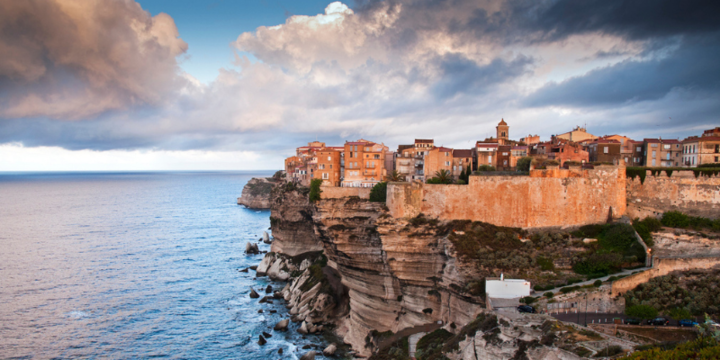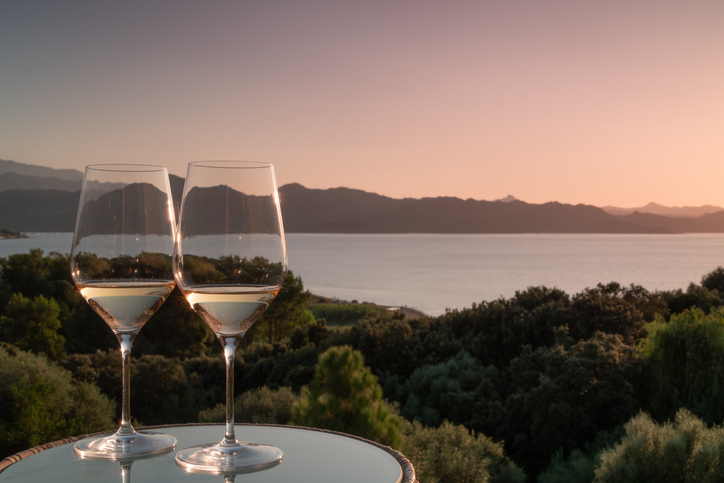Due to its warm, dry climate, Corsica is already a popular choice when looking for a holiday villa in France. Found southeast of the country’s coastline, Corsica is most well-known for its beautiful sandy beaches – ideal for those looking to unwind as a couple, with friends, or as a family.
However, for those who get a little restless, there’s also plenty to see and do here. From wandering the cobblestone streets to uncovering the rich flora and fauna, this island allows you to relax when you want to and roam when you don’t.
With our luxury Corsica villas, you'll be at the heart of it all. But if you're hoping to explore more of this beautiful country, you can check out our full collection of holiday homes in Corsica.
Corsican cuisine largely celebrates fresh local produce, making charcuterie a particularly popular appetiser. The board’s meats are often sourced from the island’s central mountains, including cochon nustrale (a regional species of pig that’s fed with chestnuts, acorns and local roots) and figatellu (pork liver sausage made with wine).
Of course, you’ll find ample fish dishes served across Corsica too, with grilled swordfish, oysters, red mullet and lobster featuring on many restaurant menus. You’ll then need something to wash it down, and with Corsican wines making up around 45% of the local wine production, you’ll be spoilt for choice.
Prefer your cheeses to meats and seafood? Brocciu is the island’s most beloved variety. It’s similar to ricotta, and you’ll find the tender cheese incorporated into soups, omelettes, and even cakes.
Speaking of which, it’s time for something sweet. Fiadone is a type of Corsican cheesecake that’s baked without any base, instead using brocciu, sugar, lemon zest and eggs. Whether served hot and fresh from the oven or cold, it’s always delicious! Chestnut flour is also an essential ingredient in many Corsican desserts such as tarts, cakes and even gingerbread.

Corsican Sausage and Cheese market
There’s no shortage of beaches to explore in Corsica – in fact, you’ll find around 200 beaches dotted along its 1000km of coastline! But as the island’s biggest draw, you’ll want to do your research ahead of time to make sure you’re hitting the best ones.
Calvi Beach is undoubtedly a top choice, offering picture-perfect views of the town. It also comes with plenty of facilities, including bars, cafes and restaurants to keep you fed throughout the day. For something a little more peaceful, choose Arinella Beach or Loto Beach – they’re rarely busy, so you won’t be fighting for a spot of sand among other tourists!
You may want to simply spend your holiday in Corsica relaxing by the pool or on the beach, but you’d be missing out on the wealth of things to do on this sun-drenched island. For those who want to get active, you can hike through Corsica’s sprawling wild countryside, and even enjoy swimming in the rivers or lakes – what better way to reconnect with nature?
Found on the west coast, the Scandola Nature Reserve is a designated UNESCO World Heritage Site, defined by its staggering red cliffs and sweeping bays. Be sure to take a boat trip from Porto to truly appreciate its beauty.
If you like your outdoor sights with a side of history, there are plenty of archaeological spots to visit too, including the 16 sculpted statues of Filitosa – they’re thought to date back as far as 4000BC, and you can still make out some of the human features that have been carved into them.
For those looking to truly step back in time, head to Bonifacio, an old town situated in the south that was established back in 833. This spot is known for its ancient houses sat atop a limestone plateau. You’ll also find a natural harbour below, with plenty of coves to explore. However, it’s the coastal town of Calvi that’s the most visited area of Corsica, boasting beautiful Roman architecture among colourful houses and cafes.
Corsica also hosts many music, food, and cultural festivals throughout the year, including Calvi on the Rocks and A Fiera di U Casgiu – so you never know what might be taking place during your visit!
 View of Bonifacio Old Town
View of Bonifacio Old Town







 View of Bonifacio Old Town
View of Bonifacio Old Town












